Last-Minute NYC Holiday Gift Guide 🎁
We’ve created a holiday gift guide with presents for the intrepid New Yorker that should arrive just in time—


This is part two of a series on sequence art in New York City which previously covered the Commuter’s Lament in the Port Authority-Times Square tunnel and the Library Walk at Bryant Park. Union Square provides a unique lens through which to view the past 172 years—a series of plaques located around the perimeter of the park. There are two sets of sequential art: one depicting the history of the park and the other illustrating scenes from the labor movement. The plaques were sculpted in bronze by Gregg LeFevre and were dedicated in 2002.
Union Square Park circa 1860:
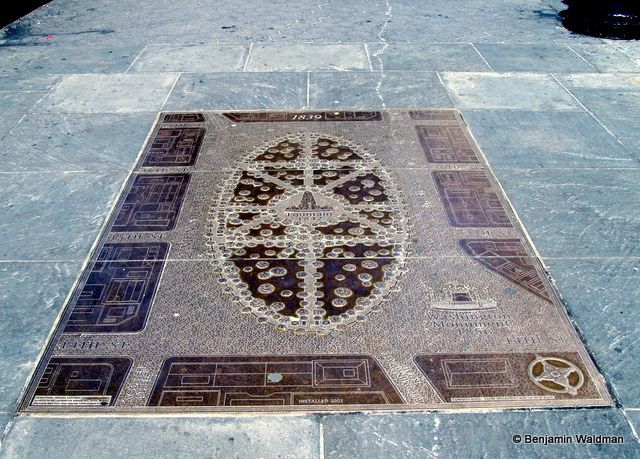
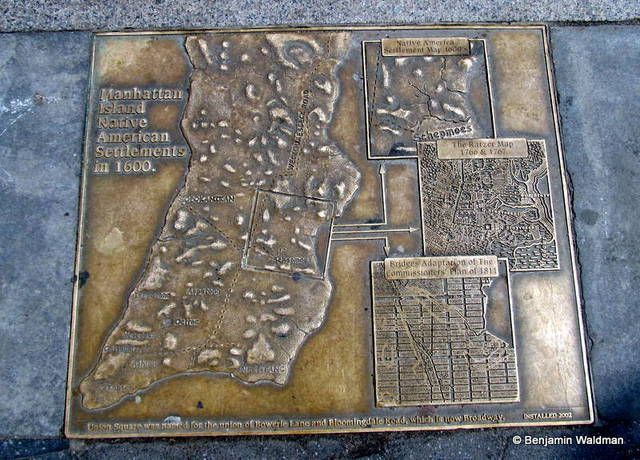
Union Square was named for the union of Bowerie Lane and Bloomingdale Road, which is now Broadway
Excavation of Union Square, looking south from what is now 18th Street with Broadway on the right:
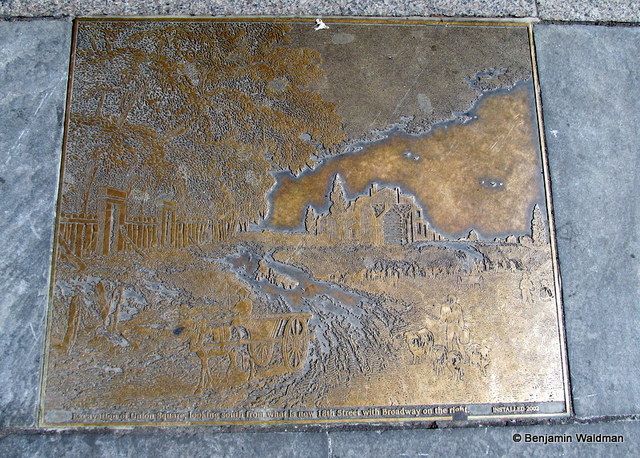
A celebratory fountain was constructed in Union Square at the completion of the Croton Aqueduct (it is now the site of the Independence Flagstaff):
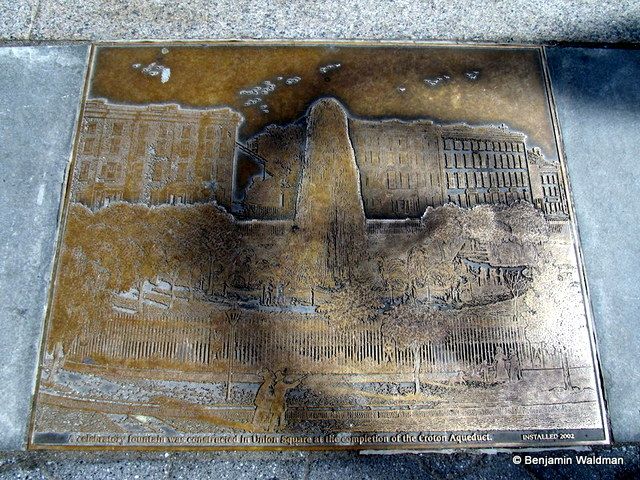
The funeral procession for President Jackson passed through Union Square in 1845:
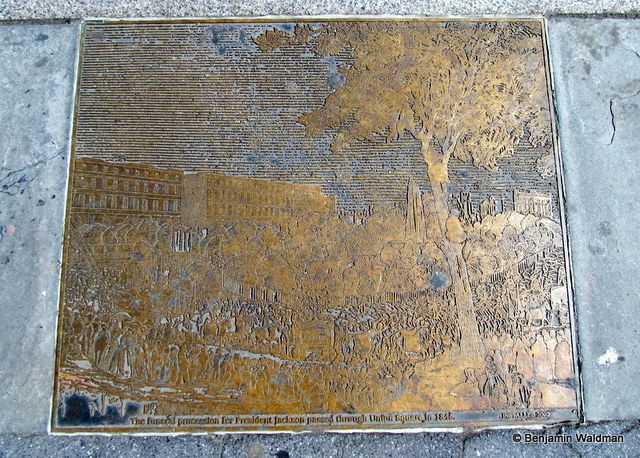
In the 1840s, Union Square was surrounded by private residences:
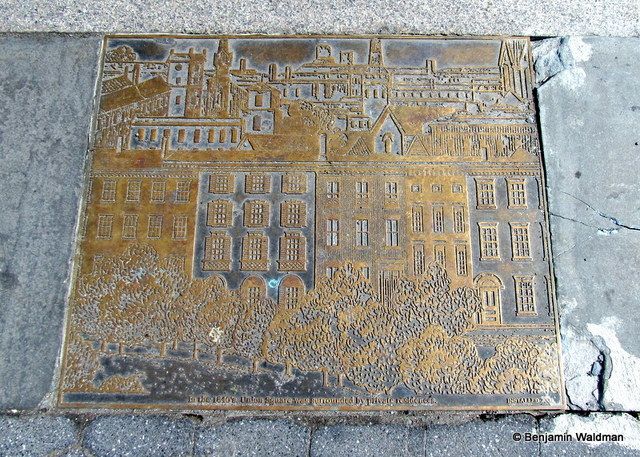
The evolution of transportation through the nineteenth century:
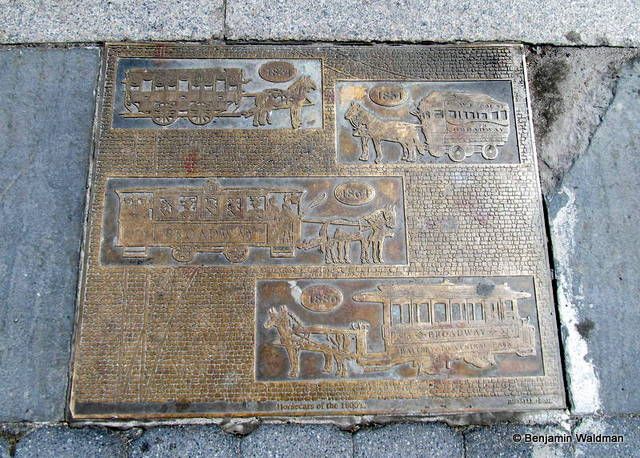
The southeast corner of Union Square in 1852:
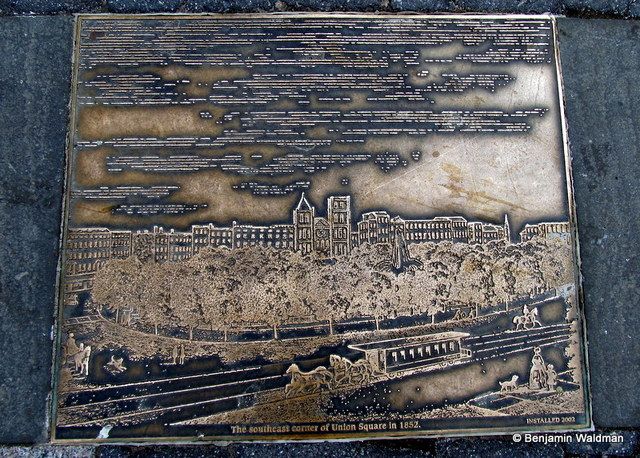
The Academy of Music, built in 1854, and the third Tammany Hall, 1868, on 14th Street east of Union Square (both buildings were demolished in the 1920s to make room for the Consolidated Edison Building):
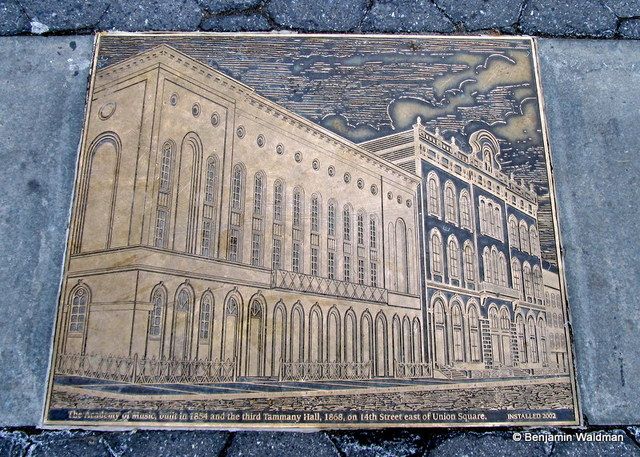
George Washington statue dedicated on July 4, 1856 (the statue is currently situated near the south entrance to the Park):
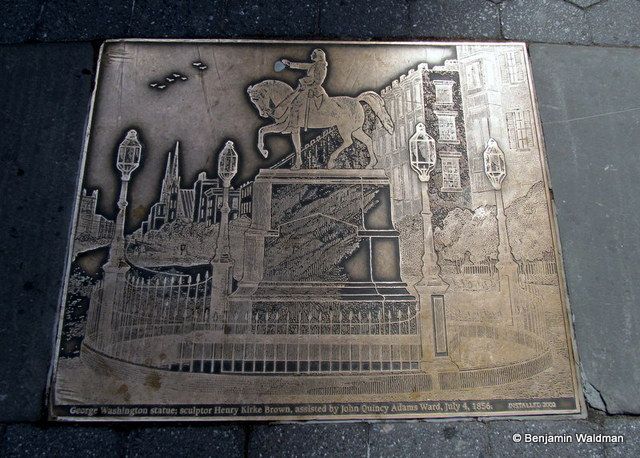
Looking south over Union Square in the 1850s:
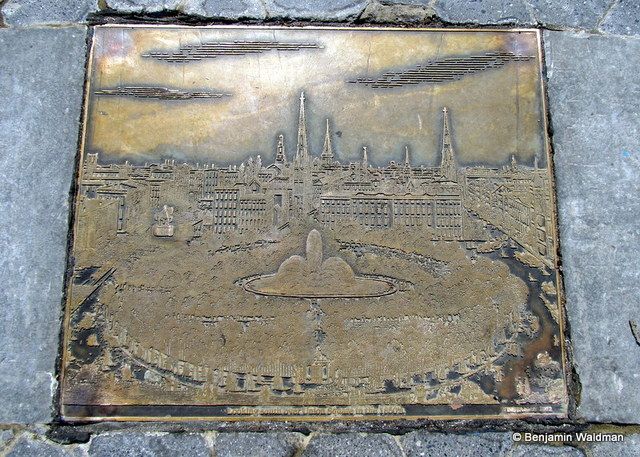
Posters and tickets from Union Square theaters and concert halls:
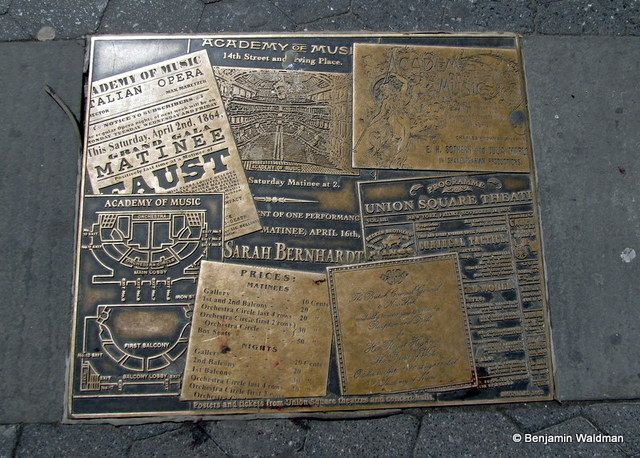
The Great Meeting was a demonstration of 150,000 supporters of the Union cause. The flag that was fired upon at Fort Sumter was placed on the Washington statue during the event:

In the 1860s, 14th Street near Union Square was called “Piano Row”:

Presentation of colors to the 20th U.S. Colored Infantry at the Union League Club Home:

The Lincoln funeral cortege passed up Broadway and through Union Square on April 25, 1865:
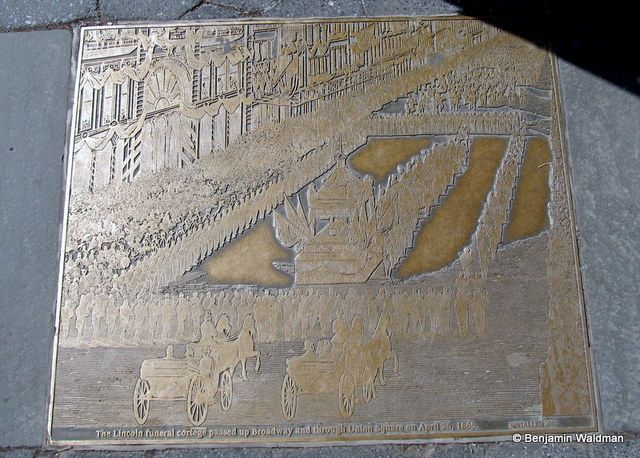
The long stretch of fashionable stores along Broadway below 14th Street was called “Ladies’ Mile” (many of these buildings still line Broadway and are protected as a part of the Ladies’ Mile Historic District):
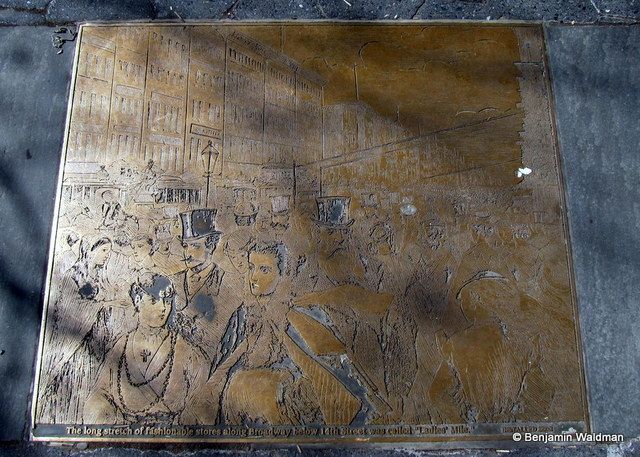
The statue of Abraham Lincoln by Henry Kirke Brown was dedicated in 1870 and moved to its present location in 1980. The statue is presently located on the north side of the park, just south of the pavilion:
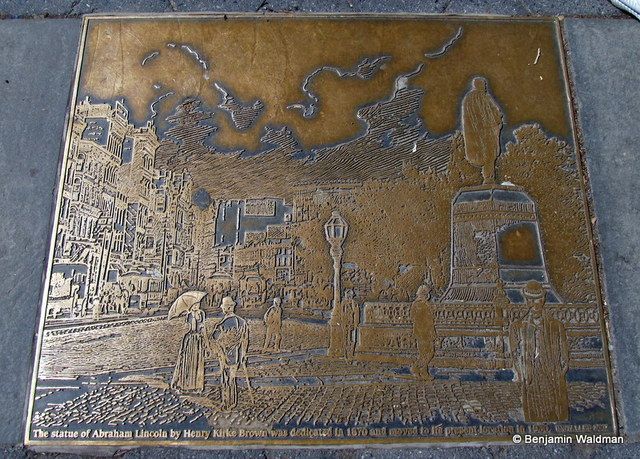
By the 1870s, there were many hotels around Union Square:

By 1872, the pavillion was built on the north side:
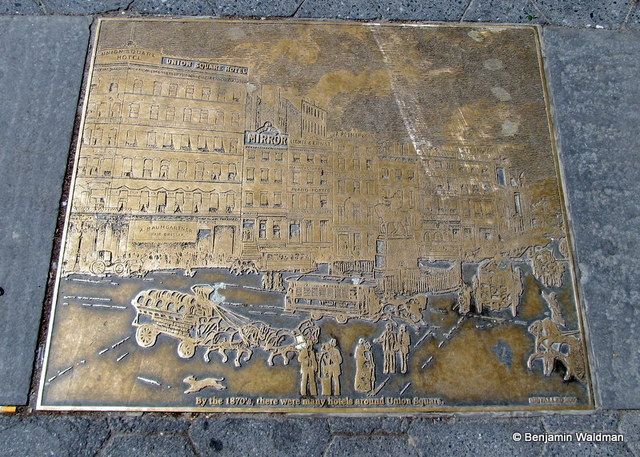
Bartholdi, sculptor of the Statue of Liberty, cast his Marquis de Lafayette statue in 1873. It was dedicated on July 4, 1876. Originally set facing the Washington statue, the work depicts Lafayette pledging his sword to the General. (The statue is currently located on the eastern side of the park near 15th Street):
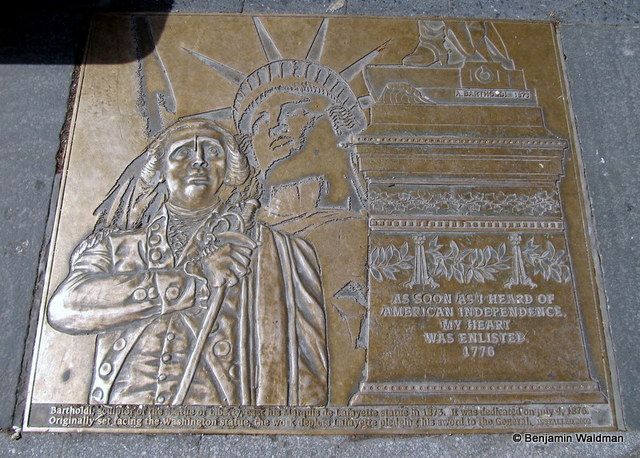
The first Labor Day Parade, Union Square, September 5, 1882:
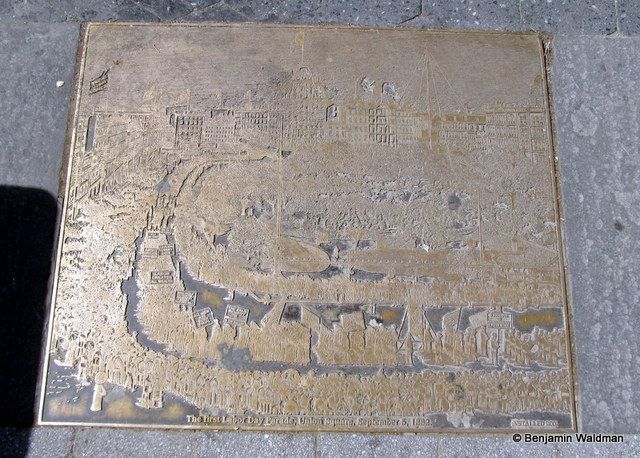
The second series of sequential art in Union Square can be found on the western side of the park hidden behind the park’s fountain. These plaques depict scenes from the history of the labor movement, including the Triangle Shirtwaist Fire:
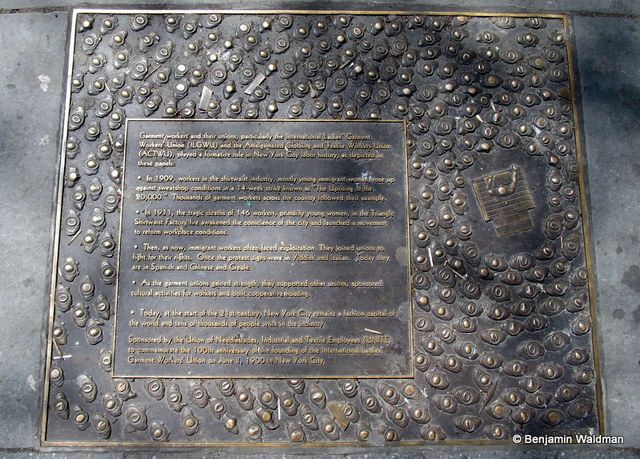
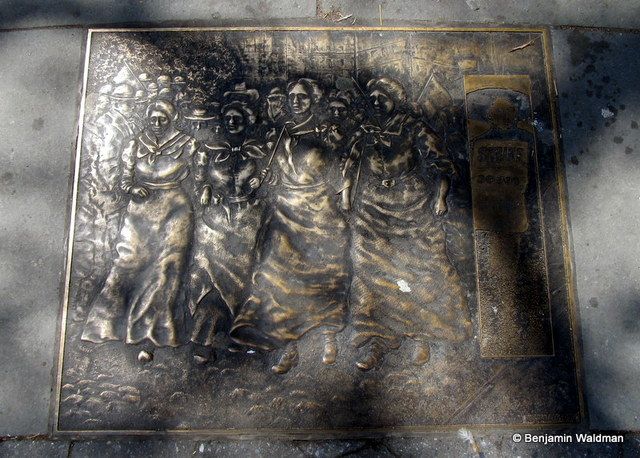
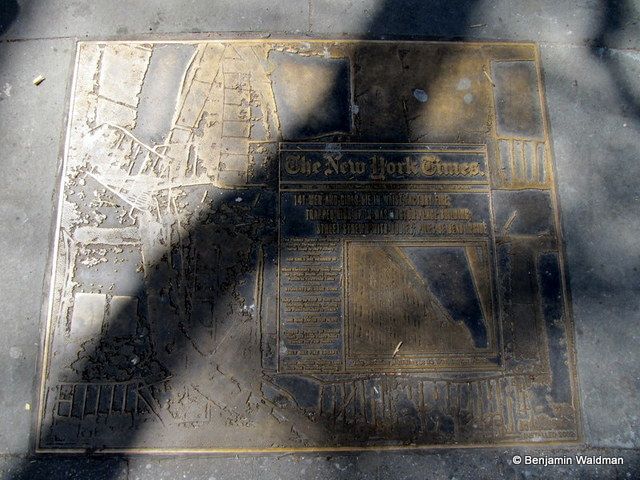
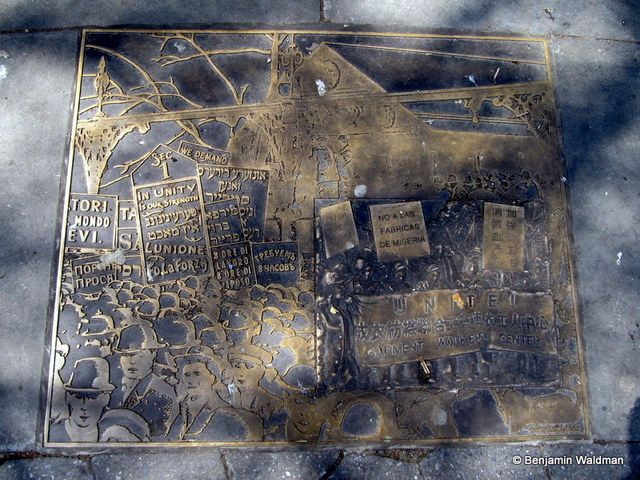
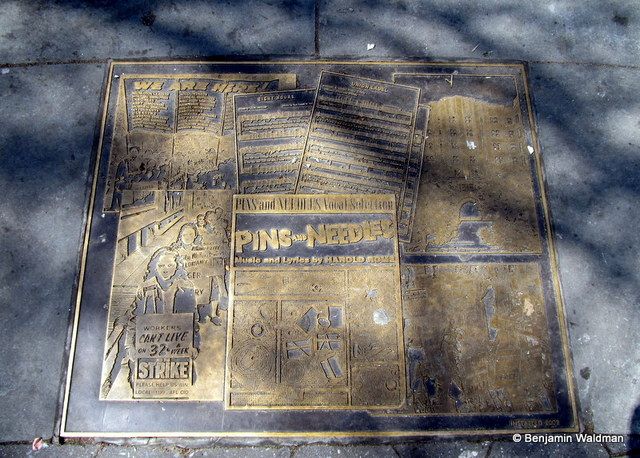
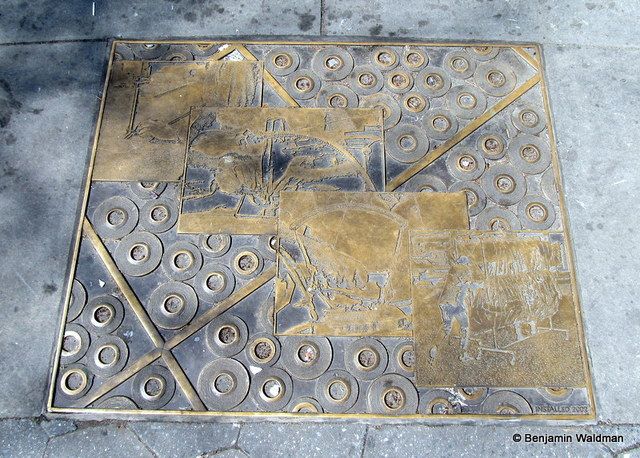
Subscribe to our newsletter